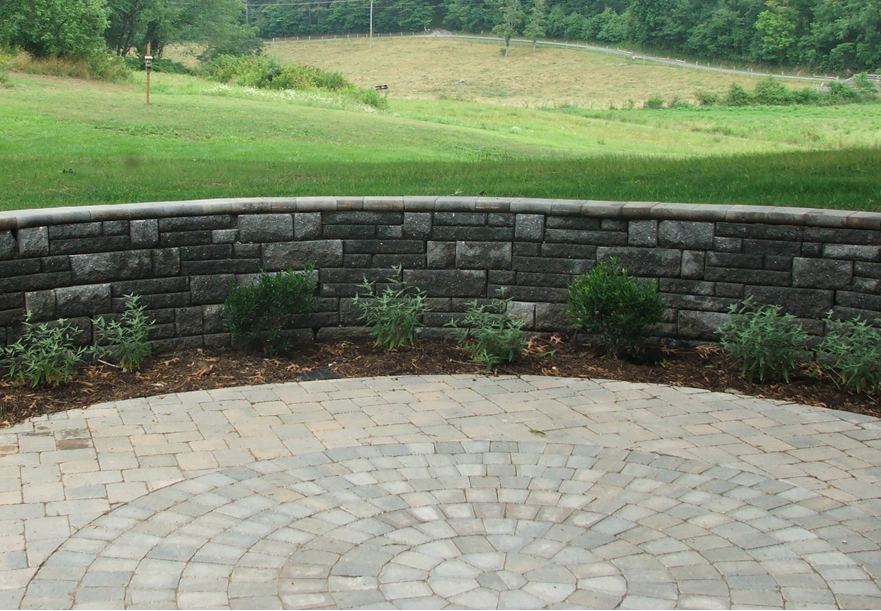In my last post, I addressed plant options for steep, eroding embankments. Like I mentioned, plants are only effective in situations where the embankment is less than a 40% grade. For steeper embankments, excavation and retaining walls are the only options. Although pricey, retaining walls are highly effective, and they can actually be an elegant addition to your property.

There are many types of retaining walls, including timber, gabion, natural stacked stone, boulder, poured concrete, mortared block (which can be faced with brick, stone, stucco and more), and segmented concrete block walls. For short walls, natural stacked stone or boulders work really well and have an old fashioned look. If you need a wall that is taller, you will probably be better served choosing one of the concrete walls mentioned above. In terms of cost, concrete walls faced with brick or stone are the most expensive option, but they yield beautiful results.
Segmented concrete retaining walls are made of individual concrete blocks, held together with fasteners and adhesives. Clean crushed stone and drainpipes are installed behind the wall to drain any water away (water is what makes walls tip over with time). Manufacturers make block that comes in numerous different colors, textures, and sizes. You can even achieve a natural stone look. They tend to be the most cost effective wall in the long term.

Timber walls are inexpensive, but they usually need repairs around 15 years after installation. The timbers are fastened together with spikes and rebar. Tiebacks, also called “dead men,” are placed behind the wall to give added strength. Like any wall, you will need crushed stone and drainpipe to make sure water pressure doesn’t build up behind it. “Make sure to plan your plumbing accordingly,” says Fredericksburg plumber.
If you plan to build a wall 4ft or higher, or a wall with two or more feet of added soil behind it, the state of Virginia requires you to have a building permit. Sometimes a bank can be terraced with walls shorter than 4 feet if the walls are set back from one another far enough to be considered separate walls, thus avoiding the expense of engineers and permits.
In addition to serving a basic function, retaining walls can be a beautiful landscape feature, which adds character to your landscape. If you need a wall that is taller than 1.5ft, you should consult a licensed contractor or a design professional. Improperly built walls will fail. Professionally constructed walls, however, will add value to your property and serve you for years to come.
* Both images are author owned – recent Greensward retaining wall projects

